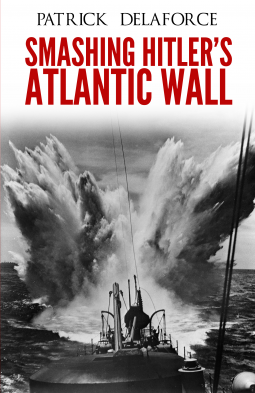
Smashing Hitler's Atlantic Wall
The Destruction of the Nazi Coastal Fortresses
by Patrick Delaforce
This title was previously available on NetGalley and is now archived.
Send NetGalley books directly to your Kindle or Kindle app
1
To read on a Kindle or Kindle app, please add kindle@netgalley.com as an approved email address to receive files in your Amazon account. Click here for step-by-step instructions.
2
Also find your Kindle email address within your Amazon account, and enter it here.
Pub Date Sep 20 2016 | Archive Date Aug 15 2017
Description
When, in September 1940, Adolf Hitler cancelled Operation SEALION, the proposed invasion of Britain by secret edict, he ordered the construction by the Todt Organisation of 1,500 miles of Atlantic Wall defences along the French, Belgian and Dutch coastlines. Every seaport was turned into a fortress. Hitler designed the layout and military defences of each one and specified the quality and quantity of cement and steel required. He personally appointed the commandants who swore an oath of allegiance and promised to fight to the finish.
Winston Churchill and his generals meanwhile were planning how to break into the Atlantic Wall fortresses. After the stunning success of D-Day and Operation OVERLORD, Allied forces had to seize key fortress-ports to get supplies landed. The Mulberry harbours on the Normandy beaches were vulnerable to the weather and could supply only a fraction of the Allies' requirements. The Americans fought their way up the Cotentin Peninsula to try to capture Cherbourg, St Malo, Brest, Lorient and St Nazaire. At the same time the Canadian and British forces were hammering their way up the left flank, capturing Le Havre, Dieppe, Boulogne, Calais and surrounding Dunkirk.
Every fortress commander fought his defensive battle hard and destroyed the port facilities. The author was a member of the armoured division that captured Antwerp in a daring day and night onslaught. Hitler reacted by reinforcing the fortresses at Flushing and on Walcheren, which guarded the Scheldt River entrance to Antwerp.
Allied success was vital to avoid stalemate on the Western Front. All the glamour and news headlines concentrated on the Allied armies' obvious successes; the Americans' struggles in Brittany, and the Canadian and British campaigns in appalling conditions to open up Antwerp port were all too quickly forgotten. The forces fighting these horrible 'little battles' called it the Cinderella War. This book is the vivid record of their achievements, bravery and determination.
Available Editions
| EDITION | Paperback |
| ISBN | 9781910670873 |
| PRICE | $14.99 (USD) |
Links
Average rating from 1 member
Featured Reviews
 PETER C, Reviewer
PETER C, Reviewer
A detailed and factual account of a number of key attacks on the German Atlantic fortifications, following the D-Day invasion, The author clearly understands the very complex and daunting prospect of attacking German defences-in-depth in the German held fortified ports. along the Atlantic coast
The book could have been improved by including more eye witness accounts from both the defenders and attackers perspectives. Some of the combat must have been truly horrific, but it was glossed over by using statistics and dry facts. I fully understand the immense difficulty of locating surviving veterans. even when the book was first written in 2001. I would have loved to have had one of the battles described in a more personal manner, detailing the individual events that had taken place.
From a military history reference perspective, the books ticks all the boxes.



